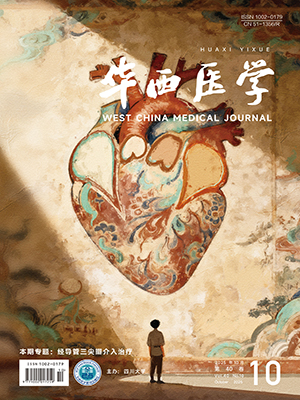| 1. |
Cockayne EA. Dwarfism with retinal atrophy and deafness. Arch Dis Child, 1936, 11(61): 1-8.
|
| 2. |
Hanawalt PC. DNA repair. The bases for Cockayne syndrome. Nature, 2000, 405(6785): 415-416.
|
| 3. |
Karikkineth AC, Scheibye-Knudsen M, Fivenson E, et al. Cockayne syndrome: clinical features, model systems and pathways. Ageing Res Rev, 2017, 33: 3-17.
|
| 4. |
Wilson BT, Stark Z, Sutton RE, et al. The Cockayne Syndrome Natural History (CoSyNH) study: clinical findings in 102 individuals and recommendations for care. Genet Med, 2016, 18(5): 483-493.
|
| 5. |
Kubota M, Ohta S, Ando A, et al. Nationwide survey of Cockayne syndrome in Japan: incidence, clinical course and prognosis. Pediatr Int, 2015, 57(3): 339-347.
|
| 6. |
Epanchintsev A, Rauschendorf MA, Costanzo F, et al. Defective transcription of ATF3 responsive genes, a marker for Cockayne syndrome. Sci Rep, 2020, 10(1): 1105.
|
| 7. |
Araújo SJ, Kuraoka I. Nucleotide excision repair genes shaping embryonic development. Open Biol, 2019, 9(10): 190166.
|
| 8. |
Troelstra C, van Gool A, de Wit J, et al. ERCC6, a member of a subfamily of putative helicases, is involved in Cockayne’s syndrome and preferential repair of active genes. Cell, 1992, 71(6): 939-953.
|
| 9. |
Troelstra C, Hesen W, Bootsma D, et al. Structure and expression of the excision repair gene ERCC6, involved in the human disorder Cockayne’s syndrome group B. Nucleic Acids Res, 1993, 21(3): 419-426.
|
| 10. |
佘任艺, 江伟. Cockayne 综合征研究进展. 临床医学进展, 2022, 12(4): 3060-3065.
|
| 11. |
Nance MA, Berry SA. Cockayne syndrome: review of 140 cases. Am J Med Genet, 1992, 42(1): 68-84.
|
| 12. |
Laugel V, Dalloz C, Durand M, et al. Mutation update for the CSB/ERCC6 and CSA/ERCC8 genes involved in Cockayne syndrome. Hum Mutat, 2010, 31(2): 113-126.
|
| 13. |
Hashimoto S, Suga T, Kudo E, et al. Adult-onset neurological degeneration in a patient with Cockayne syndrome and a null mutation in the CSB gene. J Invest Dermatol, 2008, 128(6): 1597-1599.
|
| 14. |
Fujiwara Y, Ichihashi M, Kano Y, et al. A new human photosensitive subject with a defect in the recovery of DNA synthesis after ultraviolet-light irradiation. J Invest Dermatol, 1981, 77(3): 256-263.
|
| 15. |
Itoh T, Ono T, Yamaizumi M. A new UV-sensitive syndrome not belonging to any complementation groups of xeroderma pigmentosum or Cockayne syndrome: siblings showing biochemical characteristics of Cockayne syndrome without typical clinical manifestations. Mutat Res, 1994, 314(3): 233-248.
|
| 16. |
Weidenheim KM, Dickson DW, Rapin I. Neuropathology of Cockayne syndrome: evidence for impaired development, premature aging, and neurodegeneration. Mech Ageing Dev, 2009, 130(9): 619-636.
|
| 17. |
Laugel V. Cockayne syndrome: the expanding clinical and mutational spectrum. Mech Ageing Dev, 2013, 134(5/6): 161-170.
|
| 18. |
Arenas-Sordo Mde L, Hernández-Zamora E, Montoya-Pérez LA, et al. Cockayne’s syndrome: a case report. Literature review. Med Oral Patol Oral Cir Bucal, 2006, 11(3): E236-E238.
|
| 19. |
Gitiaux C, Blin-Rochemaure N, Hully M, et al. Progressive demyelinating neuropathy correlates with clinical severity in Cockayne syndrome. Clin Neurophysiol, 2015, 126(7): 1435-1439.
|
| 20. |
Koob M, Rousseau F, Laugel V, et al. Cockayne syndrome: a diffusion tensor imaging and volumetric study. Br J Radiol, 2016, 89(1067): 20151033.
|
| 21. |
Ataee P, Karimi A, Eftekhari K. Hepatic failure following metronidazole in children with Cockayne syndrome. Case Rep Pediatr, 2020, 2020: 9634196.
|




